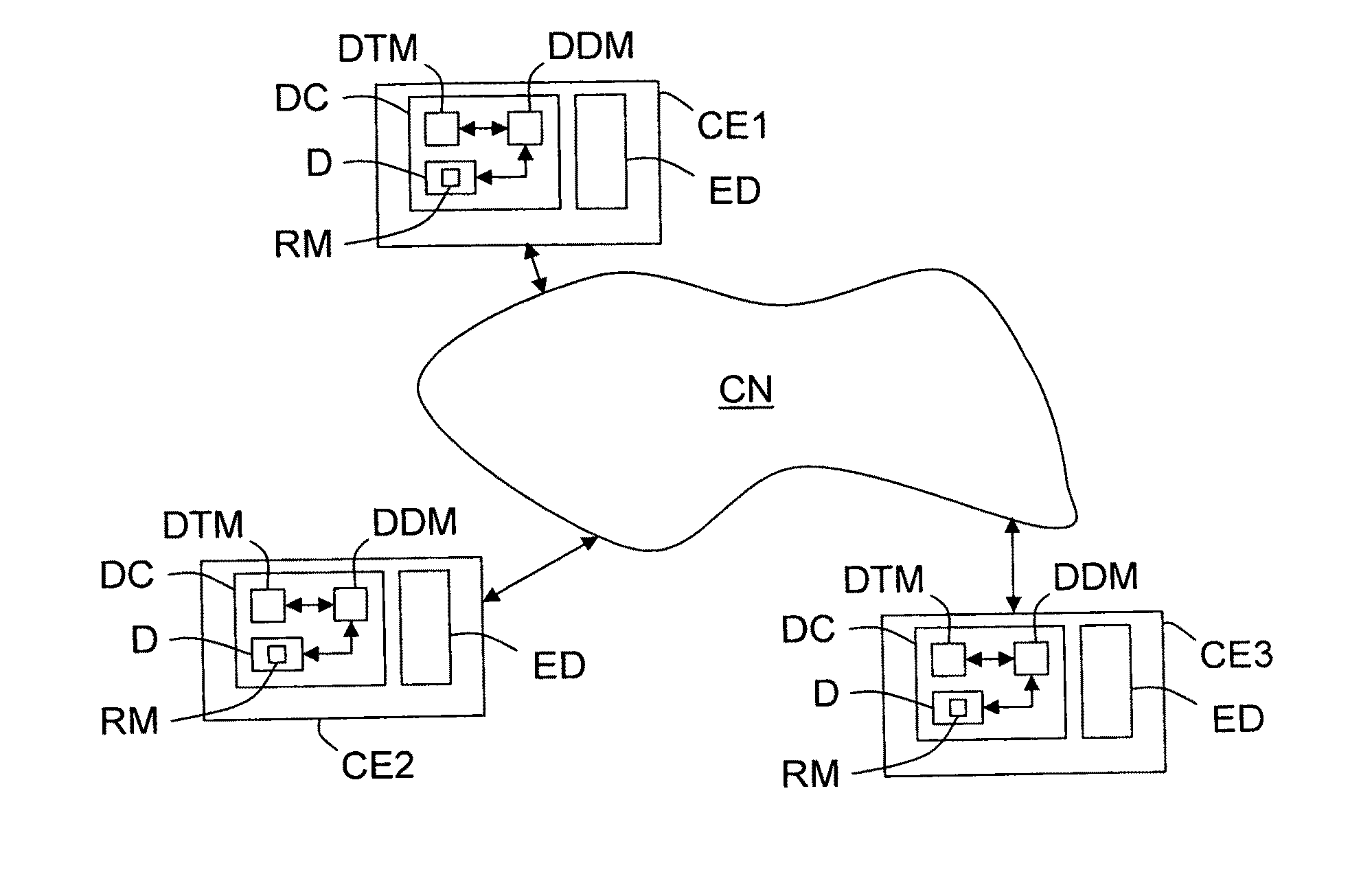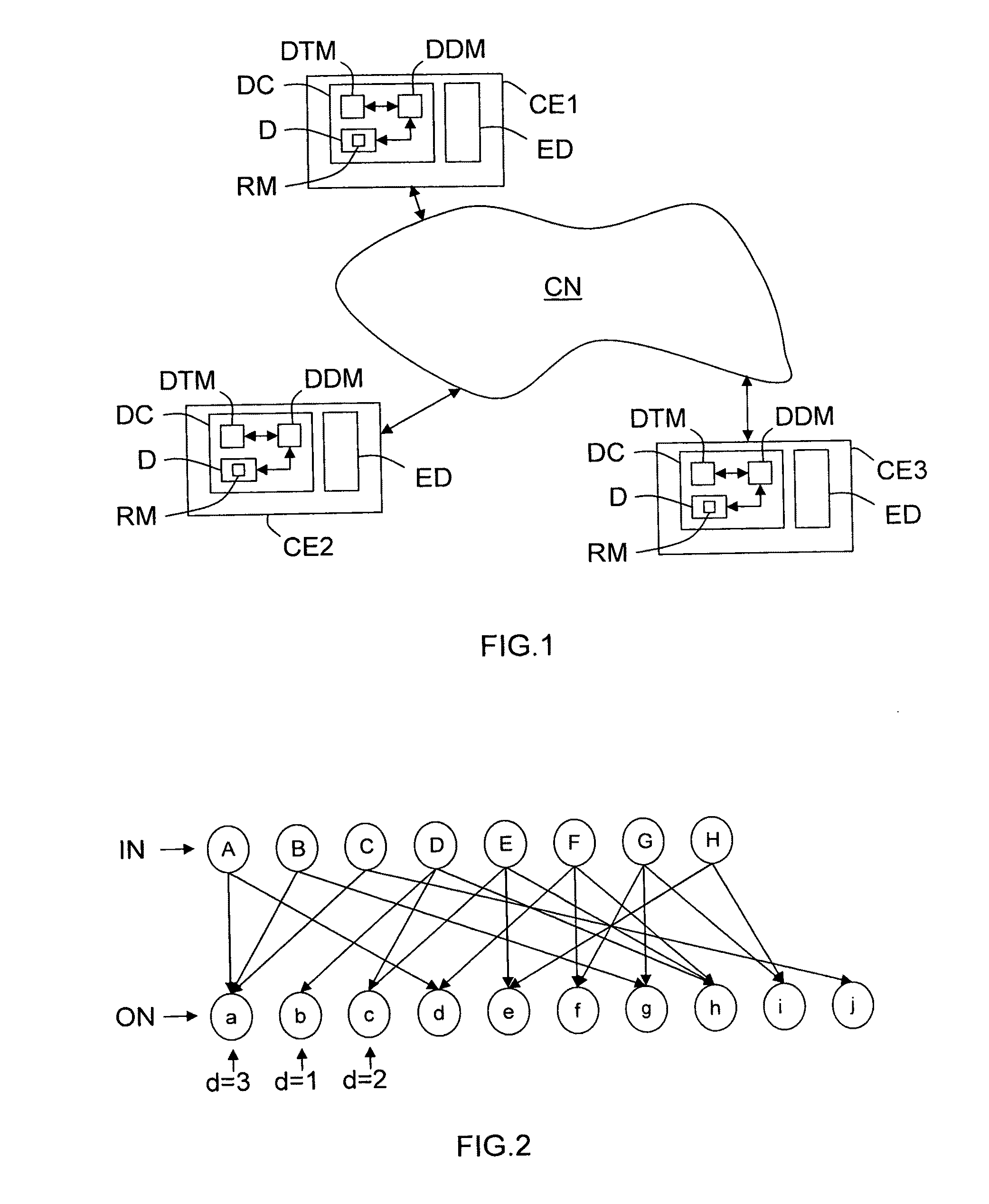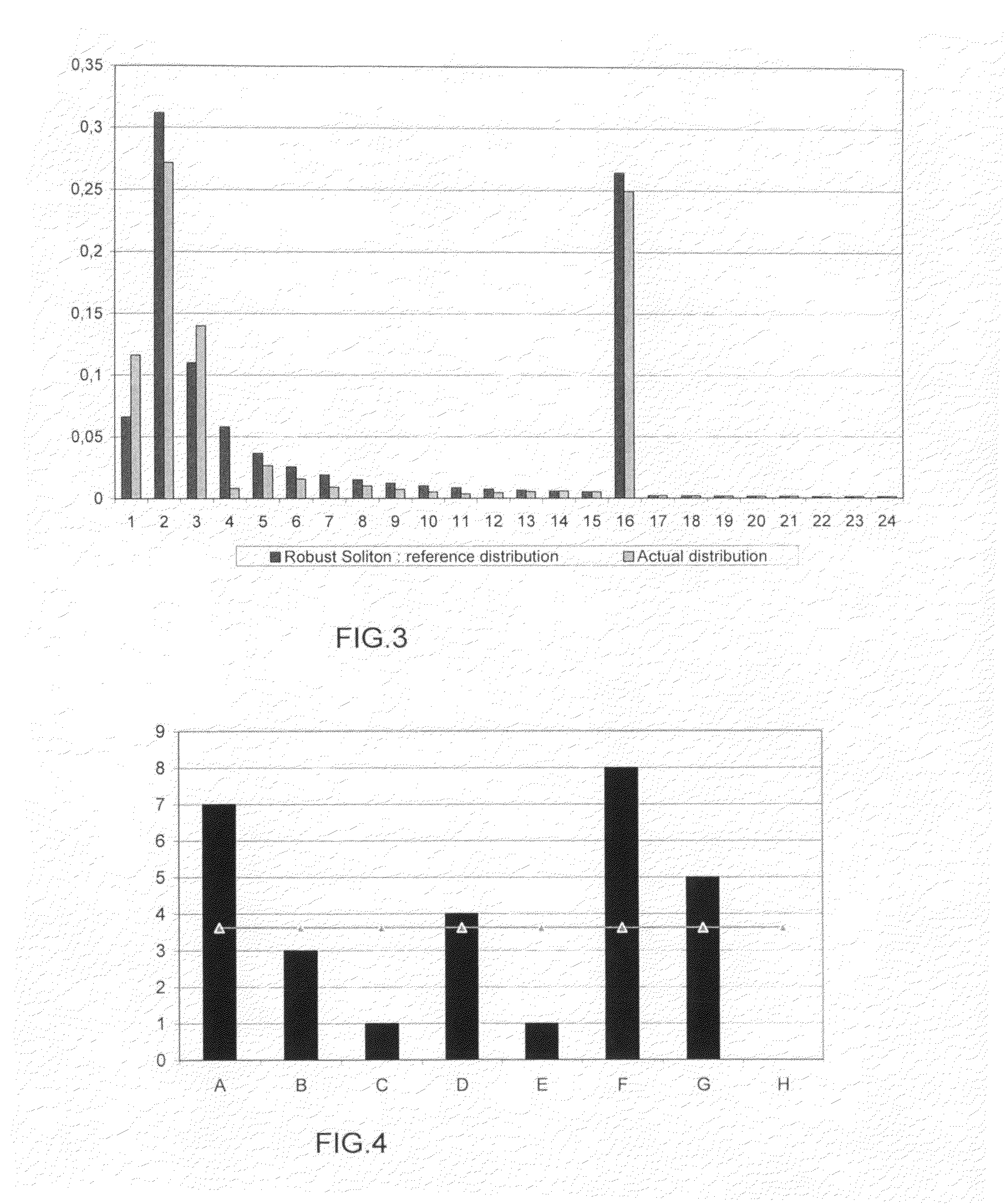Network re-encoding method and device for re-encoding encoded symbols to be transmitted to communication equipments
a network reencoding and encoded symbol technology, applied in the field of symbol data processing, can solve the problems of data loss or corruption during the transmission between communication equipments, routing is not powerful enough to reach a maximum flow, random linear network codes involve complex computations not only during encoding but also during decoding
- Summary
- Abstract
- Description
- Claims
- Application Information
AI Technical Summary
Benefits of technology
Problems solved by technology
Method used
Image
Examples
Embodiment Construction
[0044]The appended drawings may serve not only to complete the invention, but also to contribute to its definition, if need be.
[0045]The invention aims at offering a network re-encoding method and a corresponding network re-encoding device (D), intended for re-encoding LT code symbols in order to allow the use of low complexity encoders and decoders into communication equipments that are connected therebetween through a network.
[0046]In the following description it will be considered that the network is a mobile (or cellular or else radio) communication network (CN) in which communication equipments (CEi) are capable of transmitting contents therebetween at least in a broadcast or ad-hoc mode. But the invention is not limited to this type of network. Indeed, the network may be also of the wired (or fixed) type, such as a DSL network or an optical fiber network or else a cable network, notably if it allows communication equipments to communicate therebetween in a peer-to-peer (P2P) m...
PUM
 Login to View More
Login to View More Abstract
Description
Claims
Application Information
 Login to View More
Login to View More - R&D
- Intellectual Property
- Life Sciences
- Materials
- Tech Scout
- Unparalleled Data Quality
- Higher Quality Content
- 60% Fewer Hallucinations
Browse by: Latest US Patents, China's latest patents, Technical Efficacy Thesaurus, Application Domain, Technology Topic, Popular Technical Reports.
© 2025 PatSnap. All rights reserved.Legal|Privacy policy|Modern Slavery Act Transparency Statement|Sitemap|About US| Contact US: help@patsnap.com



